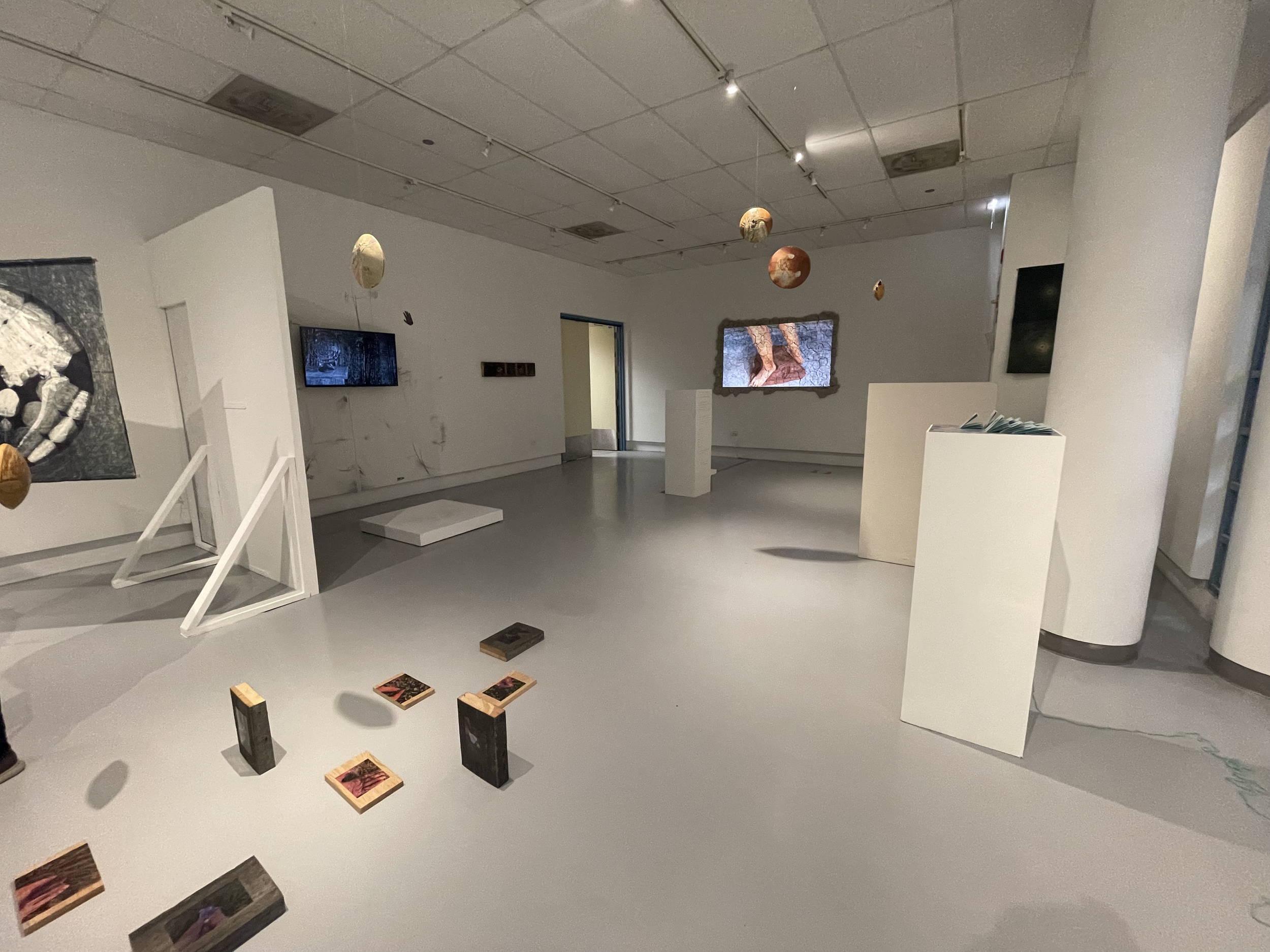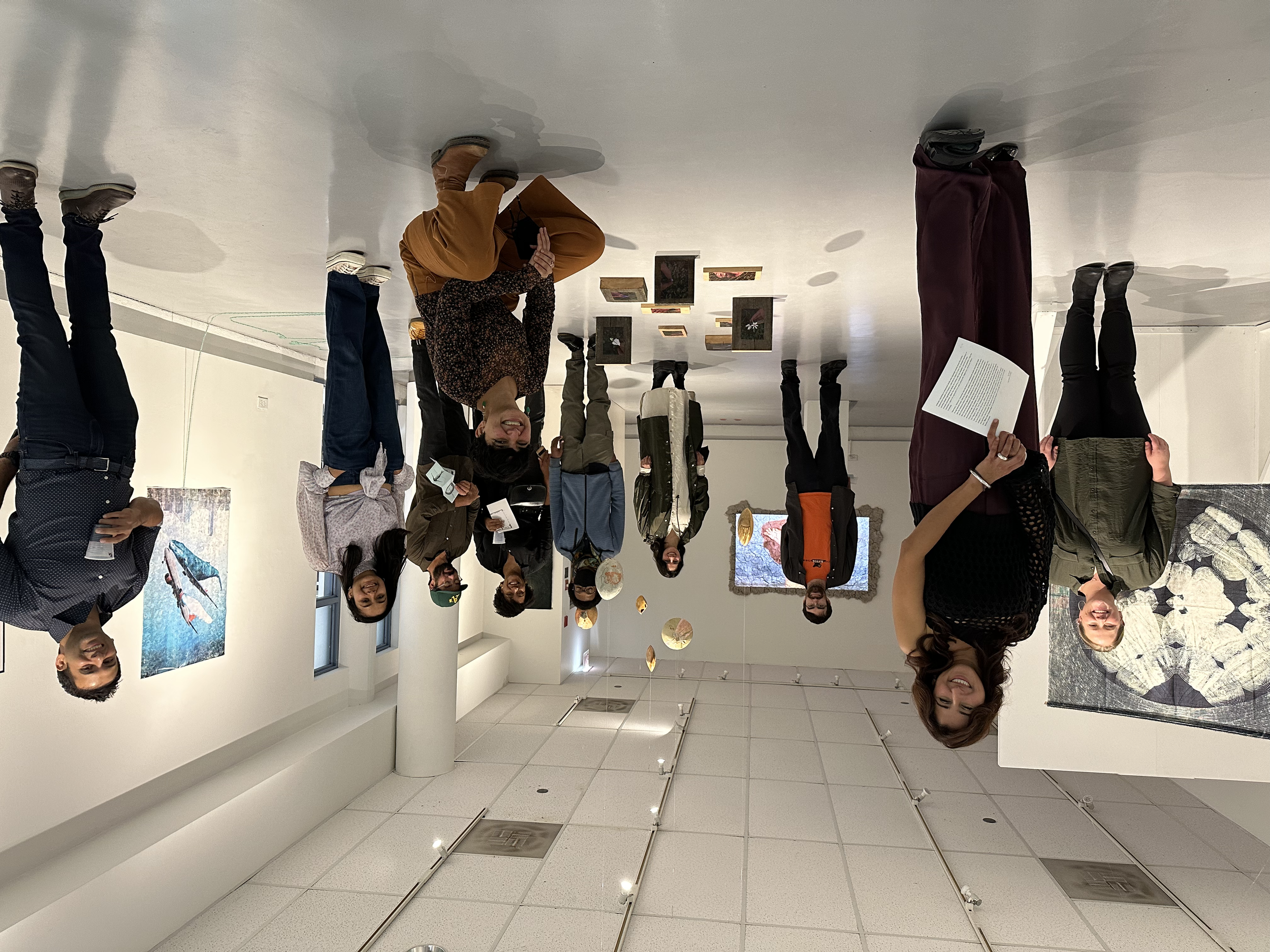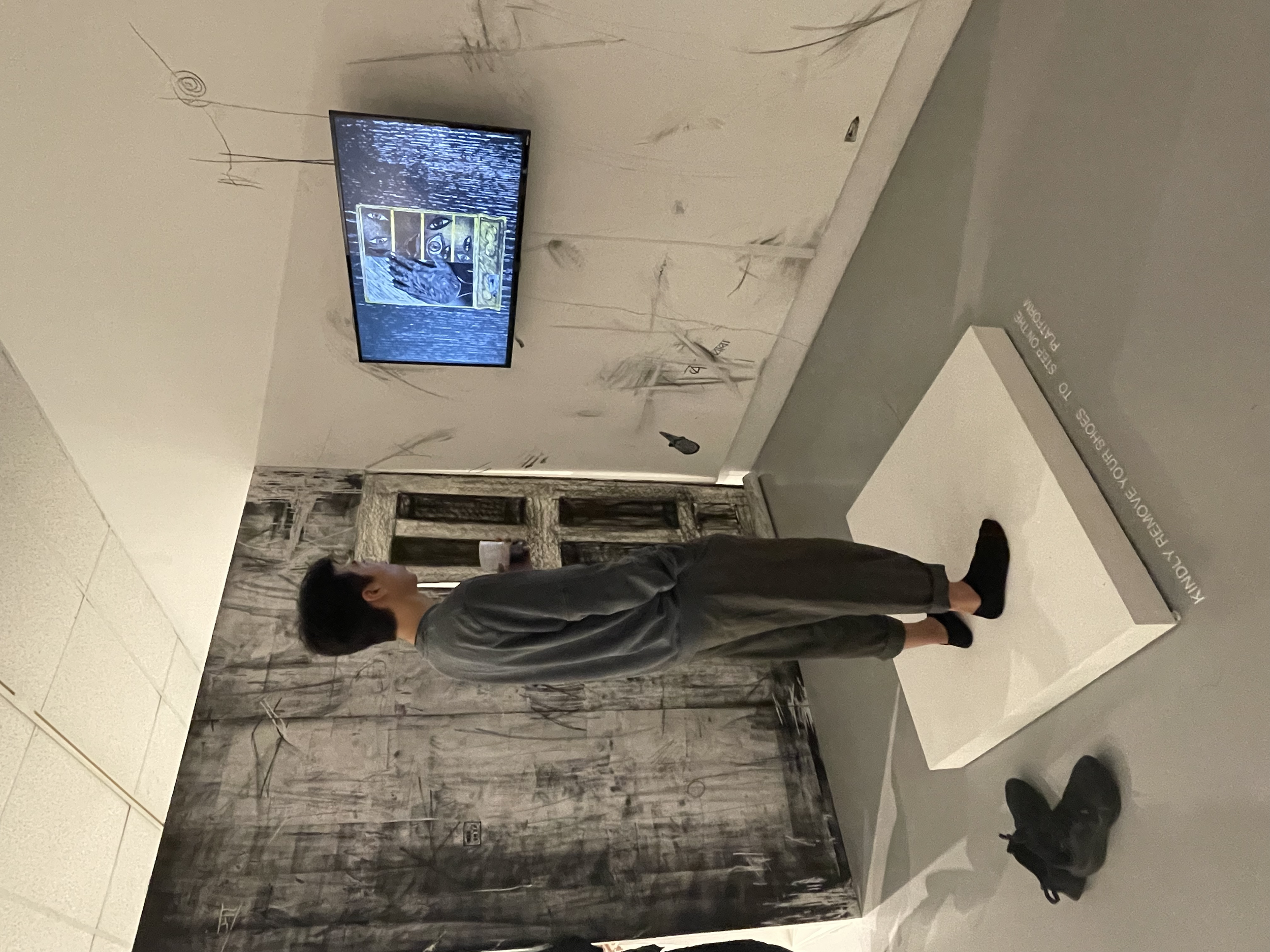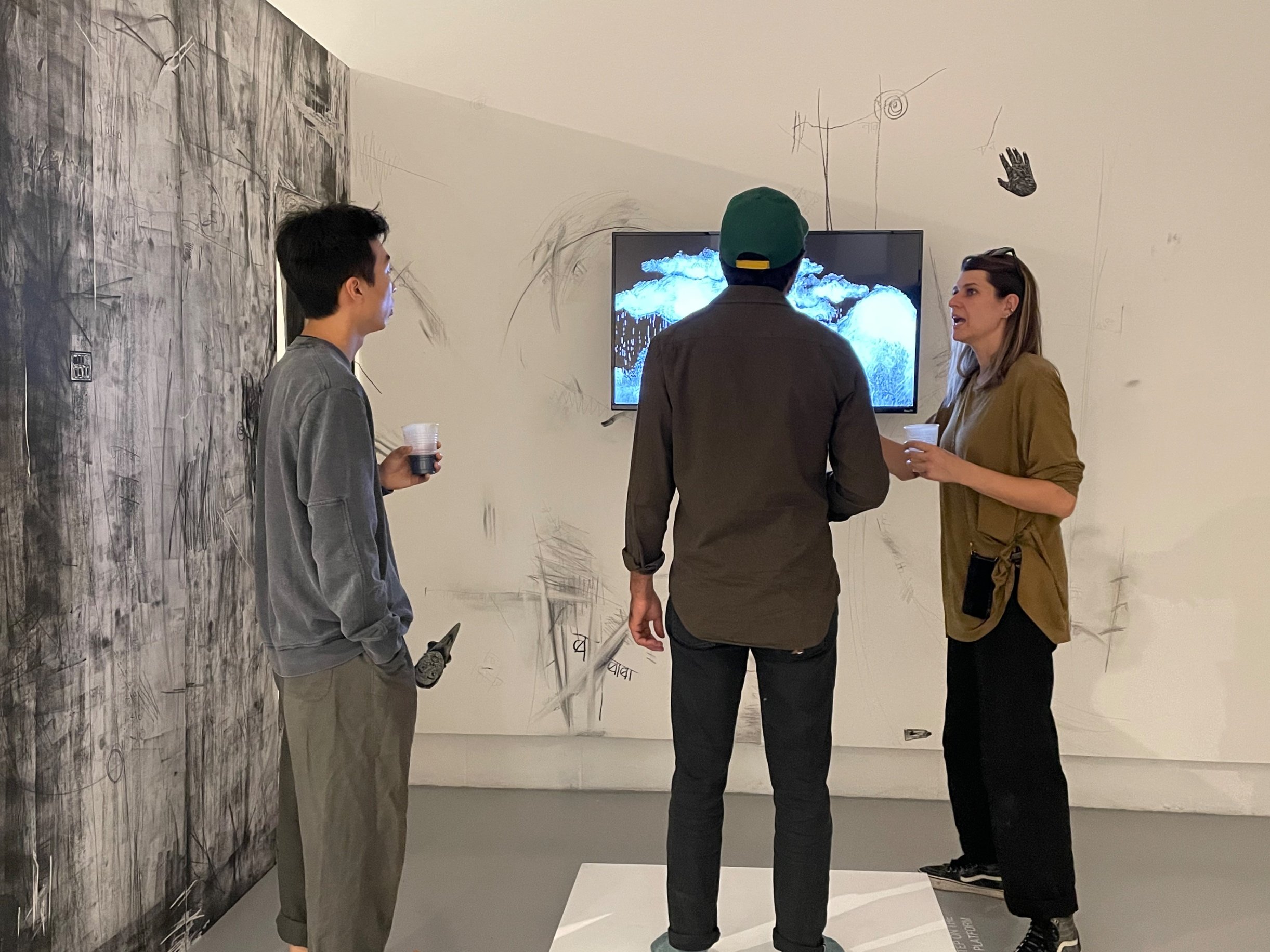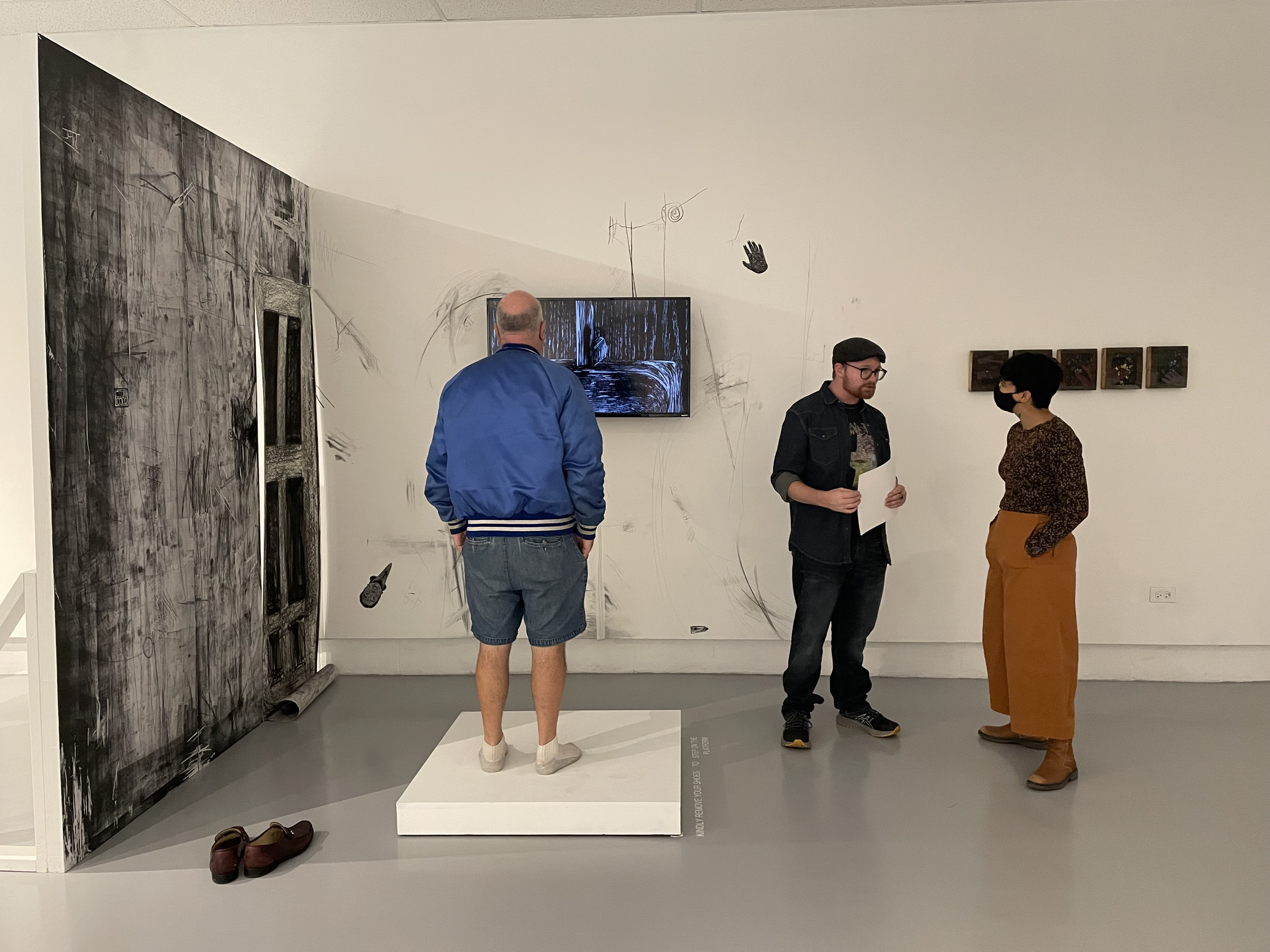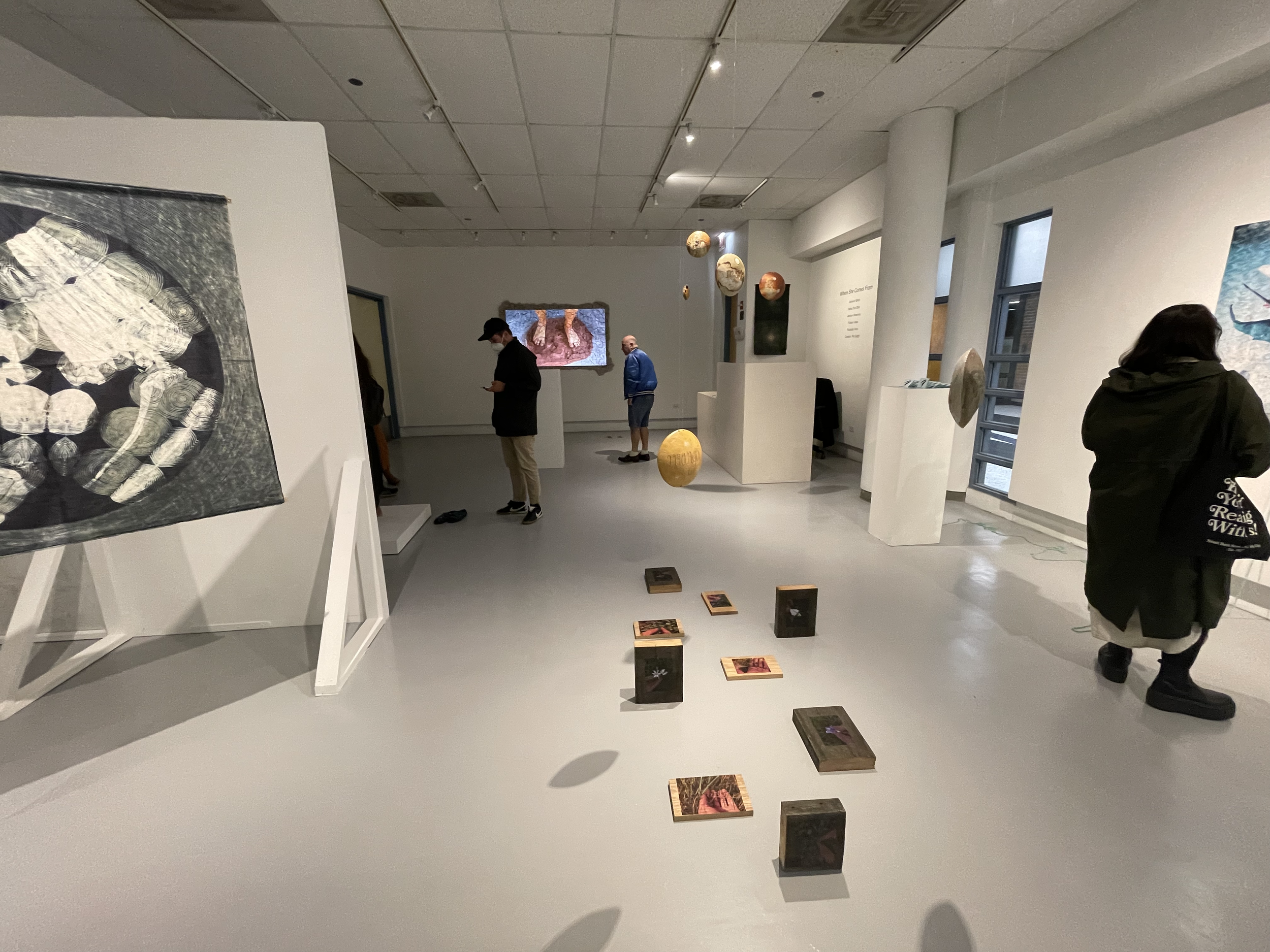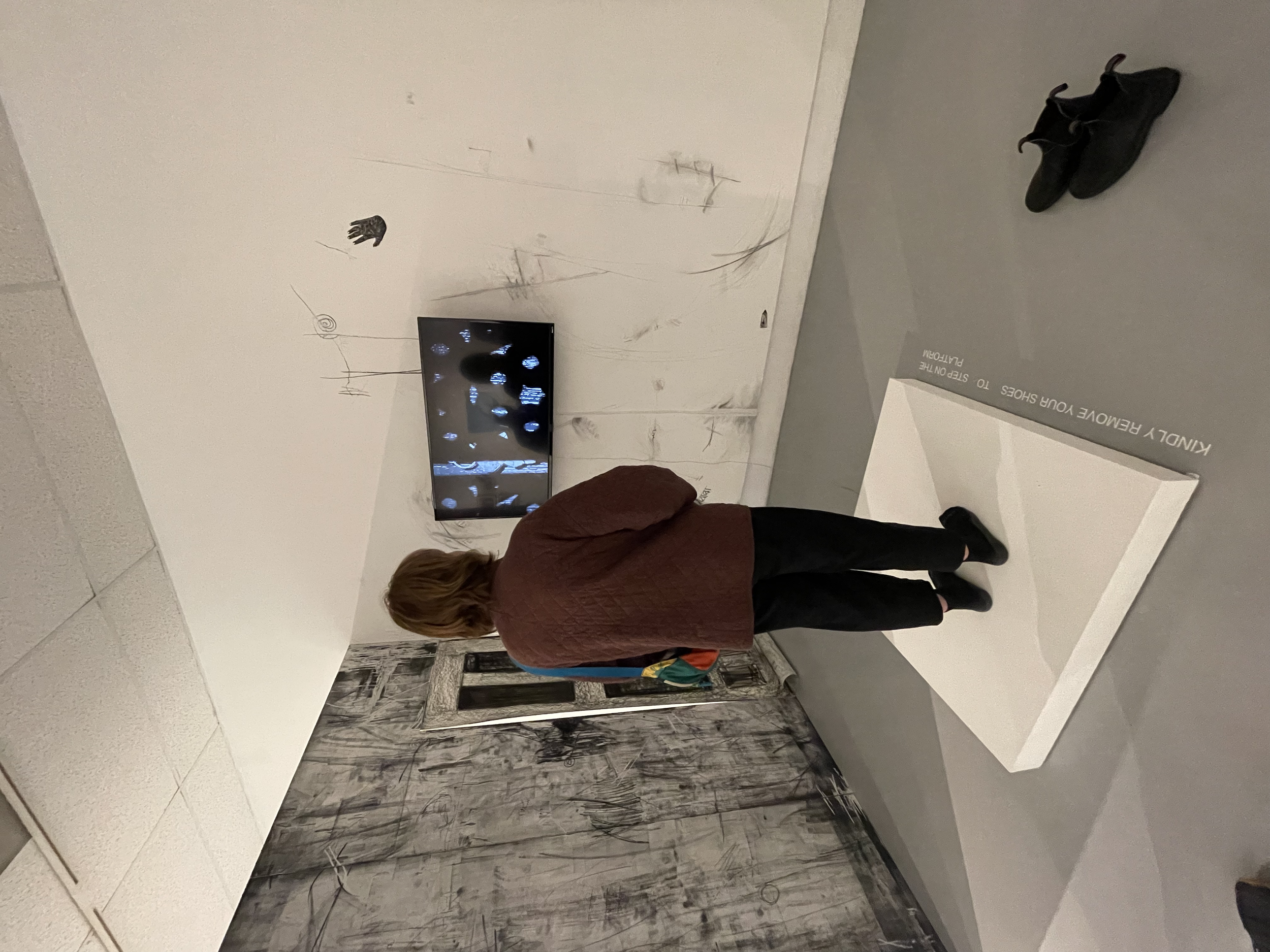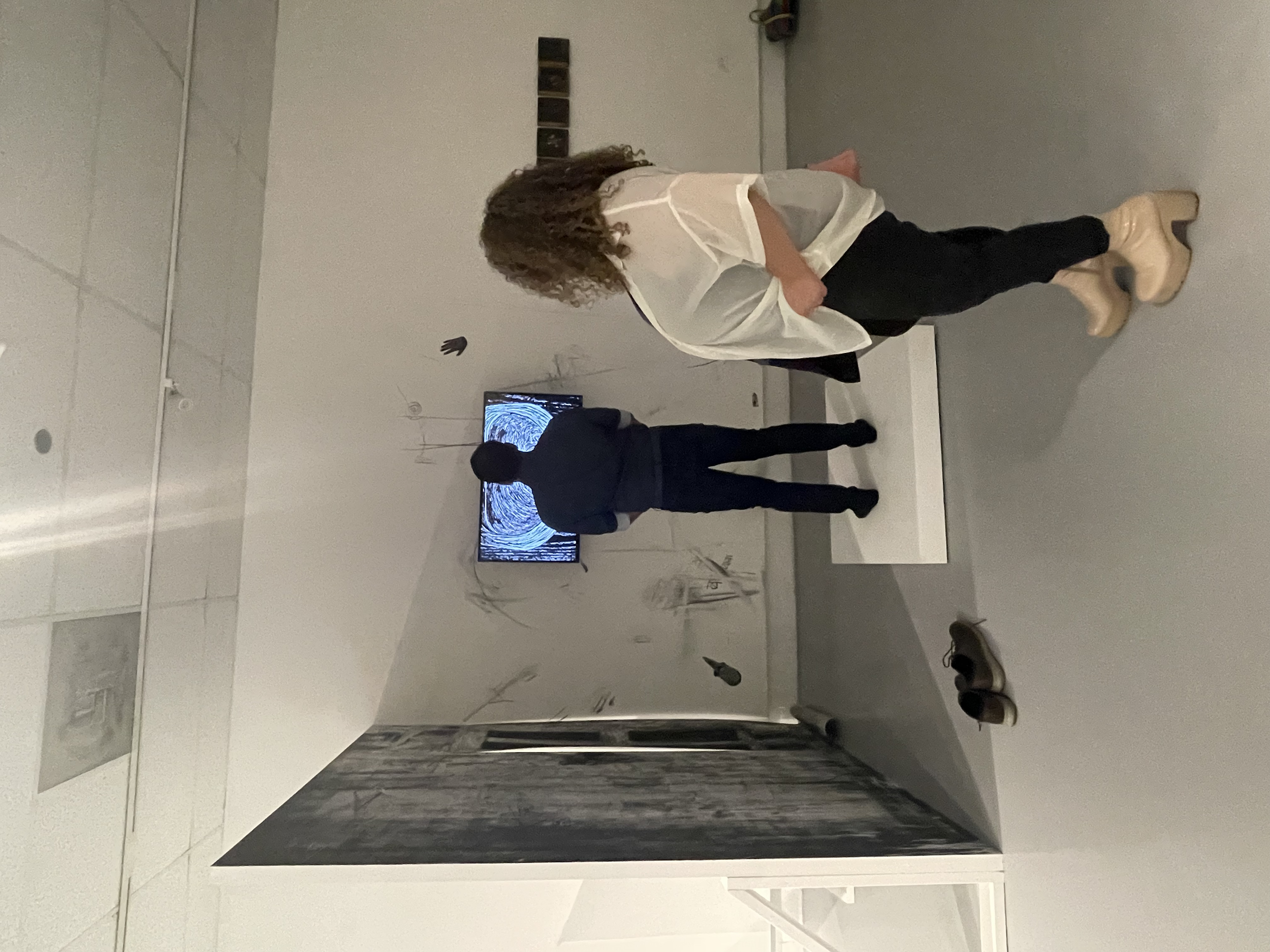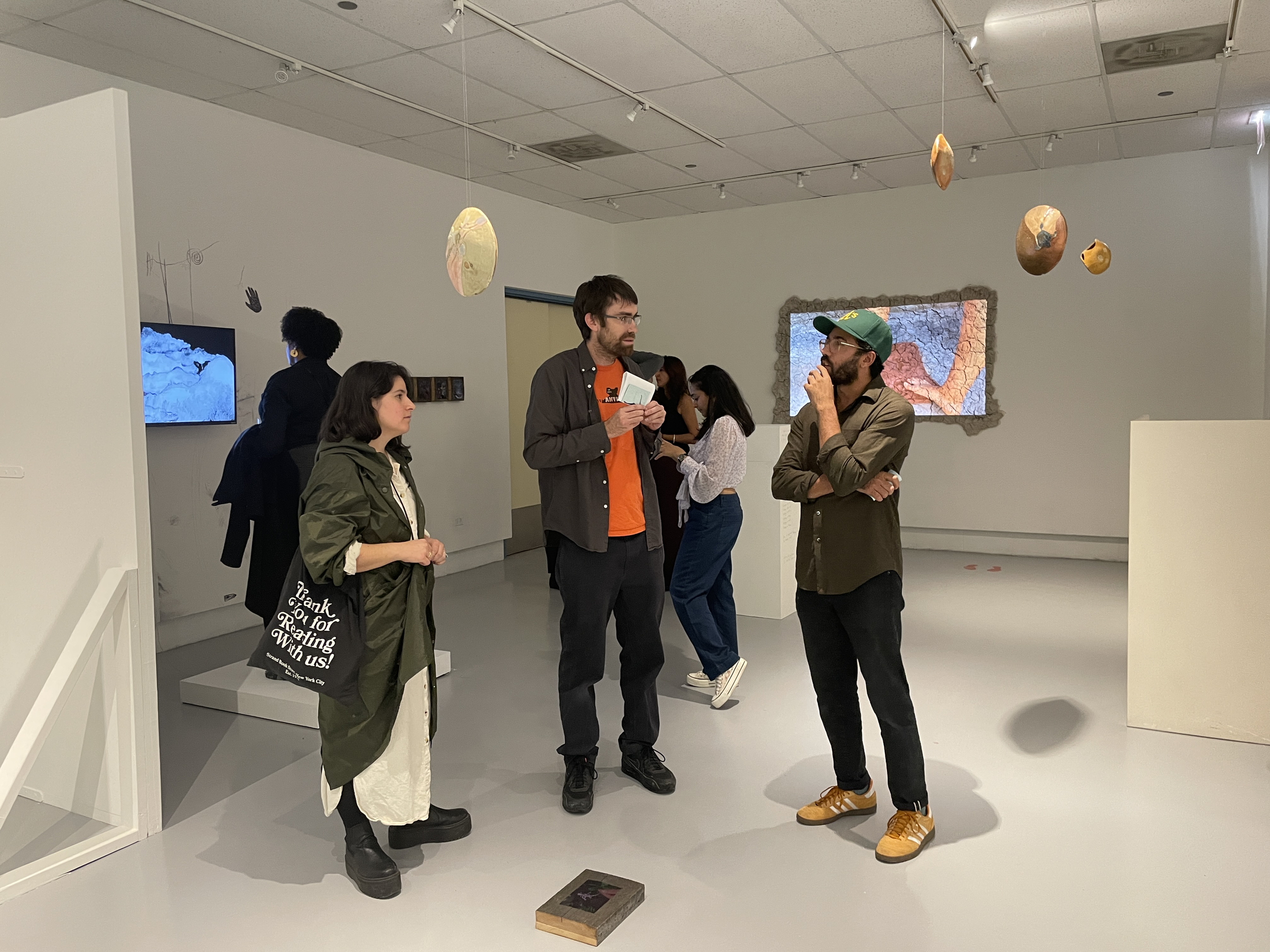
Janhavi Khemka’s ‘Sapna’ is a feverish account of the artist's experience of fear and the anxiety, navigating the world as an Indian woman with a hearing-speech impediment. Born to a hearing-speaking family in Benaresm Janhavi developed an ear infection at the tender age of 9 months. Compounded by typhoid, she lost her hearing which brought her mother to teach her how to lip-read, in order for Janhavi to communicate in a speaking hearing environment. Janhavi recalls sitting beside her mother, watching her lips move in a mirror placed before both of them. By the age of 15, her mother was diagnosed with breast cancer, succumbing to the illness by the time the artist was 18. Recalling her mothers ‘imprint’ on her, she navigates the aural through light, touch, experimental sound and tactile media, something she shares to be comforting while situating herself in an able-bodied world. Being brought up as ‘normal’ in a society that to some degree still believes in impairment as ‘hereditary’, ‘handicap’ or ‘defect’, Janhavi defies convention by situating herself in both the hearing and non-hearing worlds. She considers herself ‘privileged' for her education, and prides herself in defying socio-cultural stigma.
Janhavi’s dexterity in woodcut printmaking, animation and experimental vibrational media amalgamates, allowing her to ‘imprint’ upon the viewer. Placing them directly into a tactile-aural experience, she conjures environmental record through charcoal rubbings and relief prints, imagining what it would be like “to see and feel a storm and not hear it”. Her fear of being in danger and not being able to discern its arrival, her exhaustion from her dependence on her ‘visual’ faculty, and glints of the artists desires for intimacy and affection create an immersive video installation for Janhavi to confide in her viewer.
Janhavi’s adeptness with woodcut print points to her schooling at Santiniketan, West Bengal. Home to lithography and printmaking virtuosos Chittaprosad Bhattacharya and Somnath Hore, who paid tribute to the suffering of the Indian common man, specifically during the Bengal famine, Janhavi objectively employs the craft to expose the social and political evils of her time. Disruptign a ‘normative’ social order, she masterfully shifts the face of the paper beneath each woodcut, disturbing the surface of the print, intentionally employing misplacement as a technique to render visible her day-to-day experience of mistranslation. Indian Disability scholar, Prof. Shilpa Das speaks on the linkages between gender, disability and Indian ‘normative’ social order, positing the impaired female Indian body as the ‘Other of the Other’. Coming from a place where impairment is attributed to fate or ‘karma’, Janhavi subverts social assumptions by commanding her karmic narrative, continually learning to understand sound through touch, taste, and feeling. ‘Sapna’ in this sense is not only a rendering of an interior landscape, it is also a woman-led revolt against a normative system that is ignorant of its own perceptual limitations.
- Pia Singh
